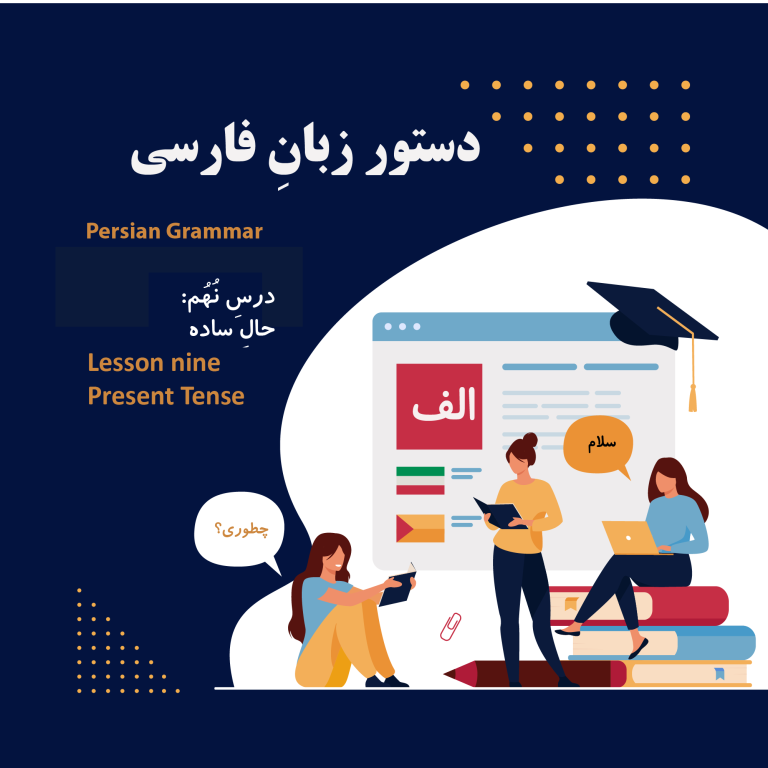This lesson is about negative construction in Persian. We learn how to change the sentences we made with Tobe into negative in Persian.
Persian is a verb-final language, which means that the verb usually comes at the end of the sentence. The verb consists of a stem and one or more suffixes or prefixes that indicate the tense, mood, person, number, and aspect of the action. For example, the verb /minevisæm/ “I write” or “I am writing” in present simple or present continuous tense. The verb stem is /nevis/ “to write”, and the prefix /mi/ and the suffix /æm/ show the tense and person of the action.
To use the negative construction in Persian, one of the methods we may use is to add the prefix /næ/ before another prefix close to the verb stem. However, this form can change to /ni-/ or /ne/ depending on the vowel in the stem of the verb. This prefix usually comes before /mi/. /mi-/ is a marker that is used to show present simple tense and also progressive structures in present and past. For example, to say “I do not write” or “I am not writing” in Persian, we would say /neminevisæm/, where /næ/ is added before /mi/. This method works for most verbs in present simple and present continuous tense, as well as past continuous tense. Here are some more examples:
- He does not read = /u nemixu:næd/
- She is not sleeping = /u næmiduxæd/
- They were not working = /a:nha næmidustænd/
Negation is a complicated topic in Persian. However, what you learn here is the most practical method of changing a sentence to its negative form. There are also some exceptions and irregularities that you may encounter when forming negative sentences in Persian.
To visit Iranian people and learn about their culture and nature follow THIS LINK.
To learn Persian grammar, here you can find lessons on Persian Grammar.
Are you interested in learning Persian with music, HERE is where you can find many slow Persian songs with their lyrics.
Practice Dubbing the characters in Persian series HERE.
Listen to famous speeches from Iranian political figures, and learn about their mindset and a little bit of history through their talk HERE.
Listen to Persian podcasts in simple Persian HERE

